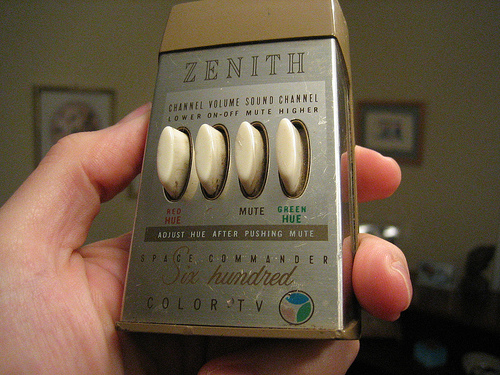 While it’s quite fun to look back at the history of television this month, it also helps to point out just how good we’ve got it today. Could you imagine flicking through all of Foxtel’s hundred-odd channels manually by getting up to the TV? That’s what it was like (except without the “hundred-odd”) before the remote control was invented in 1950.
While it’s quite fun to look back at the history of television this month, it also helps to point out just how good we’ve got it today. Could you imagine flicking through all of Foxtel’s hundred-odd channels manually by getting up to the TV? That’s what it was like (except without the “hundred-odd”) before the remote control was invented in 1950.
The first remote, developed by Zenith Radio Corporation, and dubbed “Lazy Bones” wasn’t anything like the remotes of today. For a start, it was wired into the TV, which was one of the reasons it didn’t really take off. It was also a simple device that consisted of few buttons, only capable of cycling through stations by triggering a motorised knob. I can’t imagine calling a product “Lazy Bones” is exactly an effective marketing message either…
Fortunately, Zenith backed up the “Lazy Bones” with the “Flashmatic” in 1955. It was wireless, using a beam of light pointed at one of four sensors on the TV to turn the TV on or off, change channels or adjust volume. Unfortunately, the sensor on the TV wasn’t able to differentiate between the Flashmatic light source and any other light, making its performance unpredictable.
In 1956, Zenith introduced the “Space Commander” which used ultrasound frequencies to change the channel wirelessly. It was a huge improvement over previous remotes, and was able to adjust volume and change channels. It was so successful that it was the predominate form of remote control until the late 1970s. It did, however, seem to annoy dogs…
In the late ’70s, the remote went through a design revolution to the more complex systems we have today thanks to the introduction of Teletext services on the BBC. It was also the late ’70s that saw infrared remotes introduced.
History of TV is Giz AU’s month-long look back at the development of the world-changing medium and its influence on our daily lives.
[Pic credit: Jim Rees, source: Wikipedia]